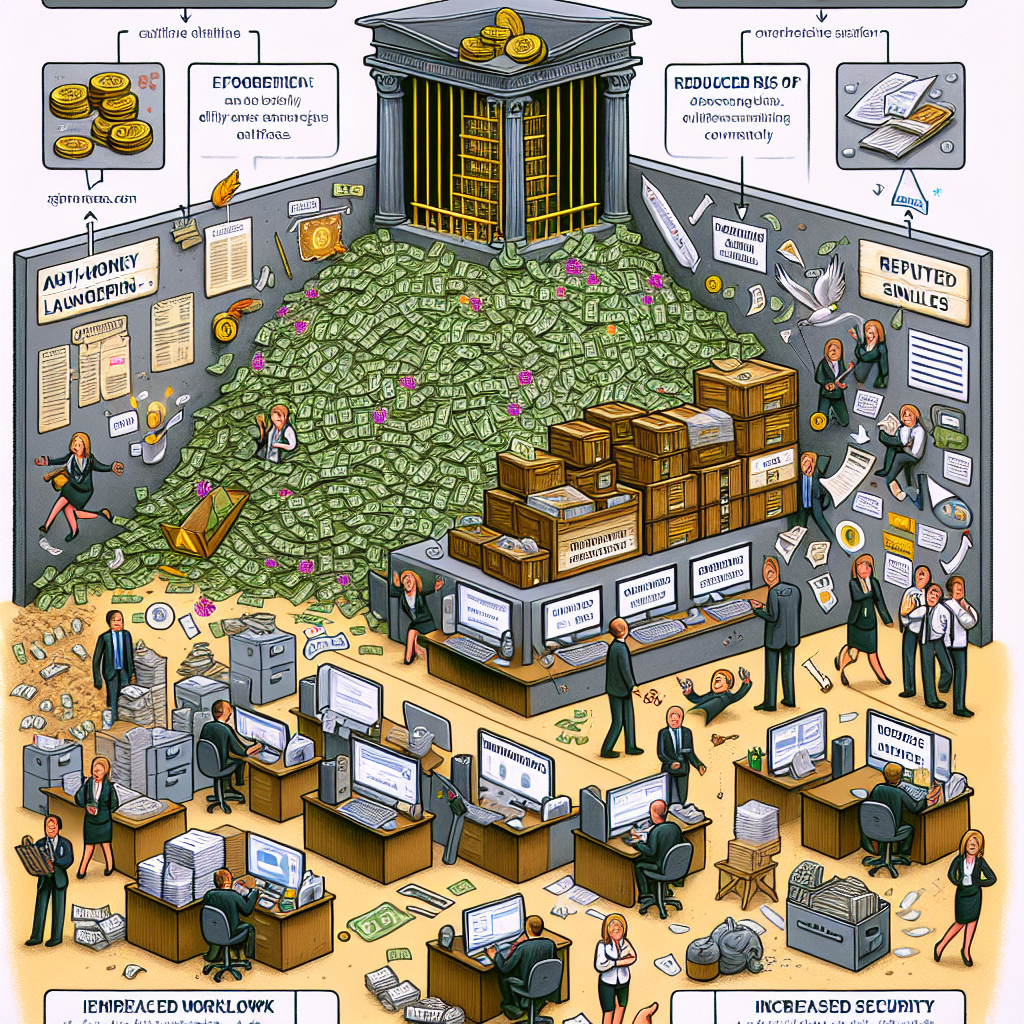In today’s fast-evolving financial landscape, the threat of money laundering is more sophisticated than ever. Financial institutions face increasing pressure to detect and prevent illicit activities while meeting complex regulatory requirements. This is where AML software becomes indispensable.
Anti-Money Laundering (AML) software is a critical solution designed to help banks, fintechs, and other financial service providers identify, monitor, and report suspicious transactions. Leveraging advanced technologies such as artificial intelligence (AI) and machine learning, AML software enables real-time risk detection, reduces manual workload, and improves compliance outcomes.
This blog explores the core functionalities, benefits, and strategic importance of AML software. From real-time transaction monitoring to automated customer risk scoring, we’ll dive into how modern AML platforms enhance financial crime prevention efforts and support regulatory compliance.
Whether you're evaluating AML software for the first time or looking to upgrade your existing system, this guide offers a comprehensive overview of why it’s a non-negotiable part of any financial institution’s risk management strategy.
The Critical Role of AML Software in Financial Institutions
AML software is indispensable in today’s financial ecosystem. Financial institutions face increasing pressure to counteract money laundering and terrorism financing.
This software provides a comprehensive framework for managing financial crime risks. It allows institutions to monitor transactions and customer behaviour efficiently.
Institutions can identify suspicious activities by analysing vast amounts of data. With real-time monitoring capabilities, they can act swiftly, preventing potential financial losses.
The software not only aids in detection but also strengthens institutions' compliance with regulatory standards. It ensures that financial entities adhere to both global and local anti-money laundering regulations.
Moreover, AML software provides invaluable insights into customer interactions. This helps institutions to refine their services while remaining compliant and secure.
Meeting Regulatory Compliance with AML Software
Compliance is a critical concern for financial services. Regulatory bodies impose strict standards to curb money laundering.
AML software is vital in ensuring that institutions meet these requirements. It automates compliance processes, reducing the manual workload.
The software generates reports needed for audits and regulatory filings. This transparency fosters trust among stakeholders and regulators alike.
Ultimately, using AML software mitigates the risk of non-compliance penalties. It equips financial institutions with the tools to navigate an ever-evolving regulatory landscape.
AI and Machine Learning: Enhancing AML Detection
AI and machine learning revolutionize how financial institutions detect money laundering. These technologies offer sophisticated analytical capabilities.
They enable AML software to uncover patterns hidden within massive datasets. By learning from historical data, AI can predict potential threats.
Machine learning models continuously improve their accuracy. This adaptive nature allows institutions to respond effectively to emerging financial crime tactics.
Institutions can benefit from reduced false positives and more accurate results. This not only saves resources but also strengthens the institution’s defence against financial crime.
Risk Management and Risk Rating in AML Software
Risk management is a cornerstone of AML software. It allows institutions to assess and prioritise potential threats effectively. An effective AML solution offers a structured approach to managing these risks.
A critical component of this risk management is the risk rating system. This system categorises customers and transactions based on their risk levels.
Here's how the risk rating system operates:
- High Risk: Immediate attention is required; potential for significant money laundering activities.
- Medium Risk: Regular monitoring is recommended; some flags are present.
- Low Risk: Low likelihood of involvement in illicit activities.
Risk ratings help allocate resources efficiently. Institutions can focus their efforts on monitoring high-risk areas while maintaining oversight of others.
A well-calibrated risk management system within AML software supports a balanced approach to crime prevention. This ensures financial institutions can act swiftly while managing operational costs.
The Rule-Based Approach vs. AI-Driven Analysis
AML software traditionally relies on rule-based methodologies. This approach uses predefined rules to trigger alerts when criteria are met.
However, rule-based systems have limitations. They may fail to adapt to evolving criminal tactics. This is where AI-driven analysis proves advantageous.
AI and machine learning offer dynamic pattern recognition. They continuously evolve, adapting to new and emerging threats.
This AI-driven approach provides a more flexible and comprehensive analysis. It complements rule-based systems, offering a hybrid strategy for detection.
Reducing False Positives and Improving Operational Efficiency
False positives are a persistent issue in AML processes. They consume time and drain resources.
AML software addresses this by enhancing detection precision. By employing machine learning algorithms, it minimises unnecessary alerts.
Reduced false positives translate to significant operational improvements. Financial institutions can dedicate their resources to genuine threats.
This efficiency ensures that compliance staff are not overburdened, allowing a focus on meaningful investigations. Consequently, operational efficiency is greatly improved, enhancing the overall efficacy of financial crime compliance programs.
Transaction Monitoring and Real-Time Alerts
Transaction monitoring forms the backbone of an effective AML strategy. Modern AML software excels in providing continuous surveillance of financial activities. It acts as the first line of defence against suspicious transactions.
One of the key benefits of transaction monitoring is its real-time alert system. These alerts notify compliance teams instantly when anomalies are detected. Such immediate notification allows for swift intervention, stopping suspicious activities before they escalate.
AML solutions utilize advanced analytics to scrutinize transaction patterns. This capability aids in identifying atypical activities that could indicate money laundering. As a result, financial institutions are better equipped to respond promptly.
Enhanced transaction monitoring protects both the institution and its clients. It reinforces trust among customers and stakeholders, showcasing a commitment to secure and compliant financial operations.
Adverse Media Screening and Enhanced Due Diligence
Adverse media screening is a vital component of AML software. This feature scans media outlets for negative reports about individuals or businesses. It helps institutions stay informed about potential risks posed by their clients.
Integrating adverse media data with due diligence processes bolsters risk assessment. These screenings uncover critical information that might not appear in traditional checks. This comprehensive view aids in making informed decisions regarding customer relationships.
Enhanced due diligence is crucial for high-risk clients or politically exposed persons (PEPs). AML software streamlines this by automating data collection and analysis. This automation ensures a thorough review without overwhelming compliance teams.
Together, adverse media screening and enhanced due diligence fortify an institution's AML framework. They ensure that potential risks are assessed accurately, safeguarding the institution from reputational and legal repercussions.
Customization and Integration: Tailoring AML Software for Maximum Impact
One of the most valuable features of modern AML software is its adaptability. No two financial institutions are alike—whether it’s due to size, product offerings, customer demographics, or regulatory exposure. That’s why customization is critical. A one-size-fits-all solution often falls short, whereas configurable AML platforms allow institutions to align detection strategies with their unique risk profiles.
Customizable AML software enables organisations to set specific thresholds, rules, and alerts based on their internal policies and the jurisdictions they operate in. This precision ensures that compliance workflows are both efficient and aligned with regulatory expectations—reducing false positives and enabling faster, more accurate investigations.
Integration is equally essential. The best AML software solutions are designed to seamlessly integrate with existing core banking systems, payment gateways, customer databases, and case management tools. Smooth integration eliminates data silos, boosts processing speed, and enhances the quality of risk assessments by providing a unified view of customer behaviour and transactional activity.
As regulations evolve and financial crime techniques become more complex, institutions need AML software that can adapt. Scalable and flexible platforms allow compliance teams to respond swiftly to new threats, incorporate updated regulatory guidelines, and continuously improve detection models without significant downtime.
In short, AML software that is both customizable and easily integrable isn’t just a technical advantage—it’s a strategic necessity for staying compliant and proactive in today’s dynamic financial environment.
Request a Demo: Experience AML Software in Action
For financial institutions evaluating AML software, requesting a product demo is one of the most effective steps in the decision-making process. A live demonstration provides a practical, hands-on look at how the software functions within real-world compliance environments—going far beyond what brochures or feature lists can offer.
Seeing AML software in action allows teams to assess key capabilities such as real-time transaction monitoring, alert generation, customer risk scoring, and analytics dashboards. It helps stakeholders understand how the platform fits within existing workflows, integrates with internal systems, and supports compliance requirements across multiple jurisdictions.
A demo also gives compliance and IT teams the opportunity to ask detailed questions—such as how rules are configured, how alerts are prioritised, or how investigative narratives are generated. This ensures the solution is not only technically sound, but also aligned with the institution’s operational processes and regulatory obligations.
Ultimately, a demo can help teams gauge the software’s usability, flexibility, and long-term scalability. It’s a crucial step in selecting AML software that delivers real value—streamlining operations, enhancing risk detection, and reducing compliance overhead.
Conclusion: Strengthen Your AML Compliance with Tookitaki’s FinCense AML Software
In an era of fast-evolving financial crime and regulatory scrutiny, choosing the right AML software is critical. Tookitaki’s FinCense stands out as a market-leading solution designed to help banks, fintechs, and financial institutions of all sizes enhance their AML compliance with speed, precision, and scalability.
Built on advanced AI and machine learning, FinCense delivers over 90% accuracy in real-time detection of suspicious activity, covering billions of transactions across diverse channels. Its smart screening module supports multi-language name matching across sanctions, PEP, and watchlists in 25+ languages, reducing false positives and strengthening onboarding processes.
What sets FinCense apart is its integration with the AFC Ecosystem—a global community of financial crime experts contributing up-to-date typologies. This ensures 100% risk coverage across all AML and fraud scenarios, even as new threats emerge. Institutions using FinCense have seen up to 50% reduction in compliance operations cost and a 70% drop in false alerts thanks to its dynamic risk scoring and alert prioritisation engine.
With a fully integrated case manager, FinCense simplifies investigations, accelerates decision-making, and enhances visibility for compliance teams—all while seamlessly integrating with your existing tech stack.
If you're looking to future-proof your compliance strategy, reduce operational burden, and stay ahead of regulatory expectations, Tookitaki’s FinCense AML software delivers the intelligence and agility you need to succeed.
Anti-Financial Crime Compliance with Tookitaki?






